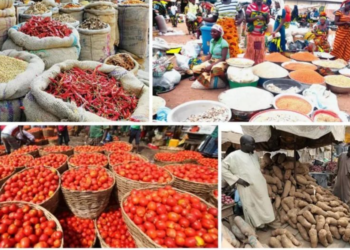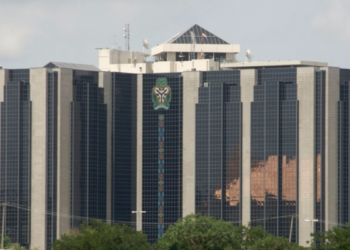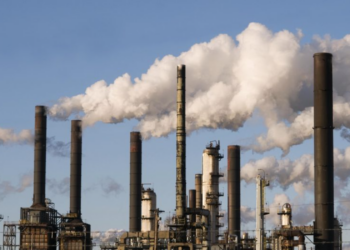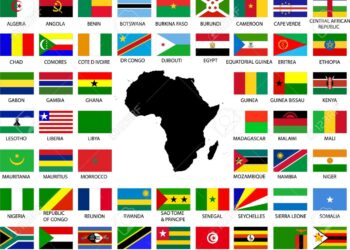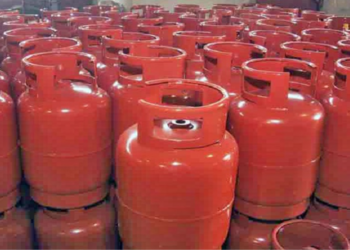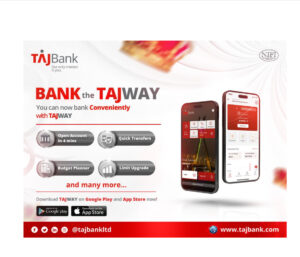As inflation remains a persistent threat across African economies, several central banks have been forced to adopt aggressive monetary tightening, been forced to adopt.
According to data compiled by Nairametrics Research, Zimbabwe, Sudan, and Ghana top the list of countries where the Monetary Policy Rate (MPR), the benchmark interest rate for lending and borrowing, is the highest on the continent.
These high MPRs reflect central banks’ efforts to rein in inflation, stabilize currencies, and attract investment inflows amid economic uncertainty. However, they also make credit more expensive for businesses and governments, potentially slowing economic recovery and deepening fiscal pressures.
As of July 2025, Zimbabwe tops the list with an MPR of 35%, reflecting ongoing hyperinflationary pressure and fragile economic conditions. Sudan and Ghana follow closely at 28.3% and 28%, respectively—levels that make credit extremely expensive for businesses and households.
Nigeria ranks fourth, having – maintained its benchmark interest rate at 27.5% in July 2025. The CBN’s aggressive tightening cycle, which began in 2022, aims to anchor inflation expectations and stabilize the naira amid persistent FX pressure and food inflation.
Below is a country-by-country snapshot of the Top 10 African countries with the most expensive borrowing rates, with corresponding inflation rates.
Top 10 African countries with the most expensive borrowing rates
Liberia – MPR: 17.25% (Jul 2025) | Inflation: 11.60% (Apr 2025)
Liberia closes the list with an MPR of 17.25% with inflation at 11.6%, indicative of its ongoing efforts to stabilize the Liberian dollar and manage inflation.
The Central Bank of Liberia is responding to domestic cost pressures and external shocks. However, high interest rates remain a deterrent to private sector credit, and the financial system’s shallow depth limits the effectiveness of traditional monetary policy tools.
Angola – MPR: 19.50% (Jul 2025) | Inflation: 19.73% (Jun 2025)
Angola’s MPR stands at 19.5%, reflecting cautious monetary policy amid volatile oil revenues and currency fragility. The National Bank of Angola is balancing between controlling inflation and maintaining liquidity in the banking system.
High rates may help anchor the kwanza, but they come at a cost to businesses still recovering from pandemic-era disruptions and rising import bills.
Sierra Leone – MPR: 23.75% (Jul 2025) | Inflation: 7.10% (Jun 2025)
At 23.75%, Sierra Leone’s MPR reflects a persistent inflation battle largely fueled by food insecurity, fuel price volatility, and low FX reserves.
The Bank of Sierra Leone has tightened monetary policy to avoid full-blown macroeconomic instability. But with limited diversification in the economy and a large informal sector, the policy impact is uneven and makes borrowing more expensive for the productive sectors.
Egypt – MPR: 24.50% (Jul 2025) | Inflation: 14.90% (Jun 2025)
Egypt’s Central Bank hiked rates to 24.5% to contain a second wave of inflation following repeated currency devaluations and subsidy reforms. Despite multiple IMF-supported adjustments, inflation remains elevated due to imported food and energy costs.
The tight monetary stance is necessary to stabilize the Egyptian pound and signal discipline to investors. However, it has slowed down domestic investment and pushed more borrowers toward the informal financial market.
DR Congo – MPR: 25.00% (Jul 2025) | Inflation: 5.00% (Apr 2025)
The Democratic Republic of Congo raised its MPR to 25% in July 2025 in response to double-digit inflation and mining sector currency repatriation delays.
With the economy heavily reliant on mineral exports, fluctuations in global commodity prices and FX supply have created price pressures. The central bank’s decision signals its commitment to price stability, but credit to the private sector has become increasingly unaffordable.
Malawi – MPR: 26.00% (May 2025) | Inflation: 27.10% (Jun 2025)
At 26%, Malawi’s policy rate reflects a central bank attempting to manage rising consumer prices amid currency instability and drought-induced food shortages.
The Reserve Bank of Malawi has limited room to maneuver, and while high rates help mop up excess liquidity, they also put pressure on SMEs and agricultural producers seeking credit to stay afloat. Investors remain cautious, and growth prospects are subdued.
Nigeria – MPR: 27.50% (Jul 2025) | Inflation: 22.22% (Jun 2025)
Nigeria’s Monetary Policy Committee (MPC) hiked the MPR to 27.5% in July 2025, extending one of the most aggressive tightening cycles in its history.
The Central Bank of Nigeria (CBN) is battling a mix of import-driven inflation, naira depreciation, and fiscal imbalances. While the hike is designed to anchor inflation expectations and lure foreign capital, it has raised the cost of funds for businesses already struggling with logistics, power, and regulatory bottlenecks.
Ghana – MPR: 28.00% (May 2025) | Inflation: 13.70% (Jun 2025)
Ghana’s Bank of Ghana raised the policy rate to 28% in May 2025 to curb inflationary momentum and stabilize the cedi. Following an IMF-supported program and tighter fiscal controls, Ghana has made modest progress on inflation.
However, the high borrowing cost reflects lingering risks such as debt sustainability concerns, FX liquidity pressures, and public sector wage demands. The elevated MPR continues to weigh on domestic consumption and private sector expansion.
Sudan – MPR: 28.30% (Feb 2023) | Inflation: 113.35% (Jun 2025)
Despite declaring its last MPR in early 2023, Sudan’s policy rate remains one of Africa’s steepest with triple-digit inflation at 113.35%. At 28.3%, the high rate is a response to hyperinflation, currency depreciation, and political instability.
With limited access to global capital markets and ongoing internal conflict, the Central Bank of Sudan uses tight monetary policy as a last line of defense to preserve the value of its currency.
However, the broader economy remains in a fragile state, with access to credit nearly frozen.
Zimbabwe – MPR: 35.00% (Jun 2025) | Inflation: 95.80% (Jul 2025)
Zimbabwe maintains the highest interest rate on the continent as inflationary pressures remain stubbornly high. The Reserve Bank of Zimbabwe (RBZ) held the policy rate firm at 35% to rein in persistent price instability driven by currency volatility and structural economic weakness.
While the move reflects a tightening stance, it has also made credit nearly inaccessible for businesses and consumers. The cost of borrowing has choked growth prospects, pushing more activity into the informal sector.
Why MPR matters
The Monetary Policy Rate (MPR) serves as the benchmark for all interest rates in a country. Commercial banks generally lend at rates above the MPR, making it a critical tool for controlling inflation and influencing credit conditions.
When inflation rises, central banks typically hike the MPR to reduce money supply and cool price pressures. Conversely, lowering the MPR can stimulate borrowing and spending in periods of economic slowdown.
While elevated MPRs increase yields on fixed income instruments attracting investors to treasury bills, bonds, and commercial paper they also raise the cost of borrowing for governments, households, and businesses. This trade-off presents a policy dilemma in fragile economies where growth is weak, inflation is high, and fiscal buffers are thin.
Ultimately, these countries’ high interest rates underscore a broader challenge: managing inflation without suffocating growth. Without corresponding structural reforms to boost productivity and strengthen institutions, tight monetary policy alone may not deliver the stability policymakers seek.




